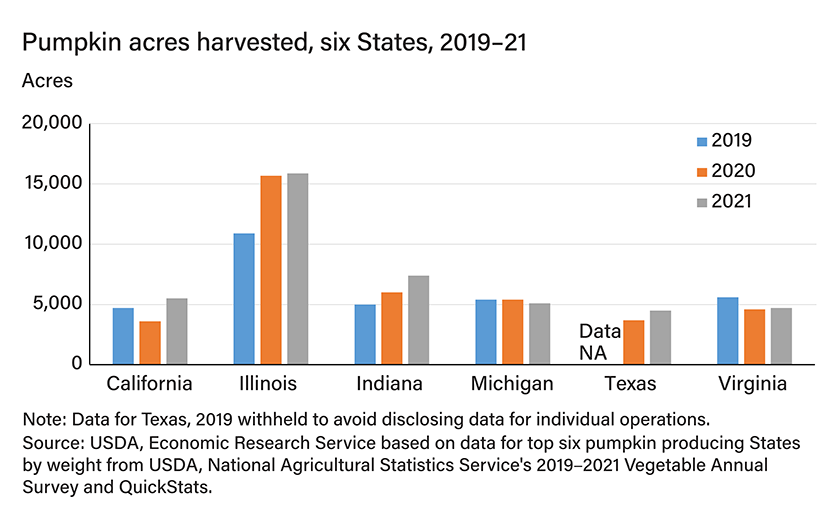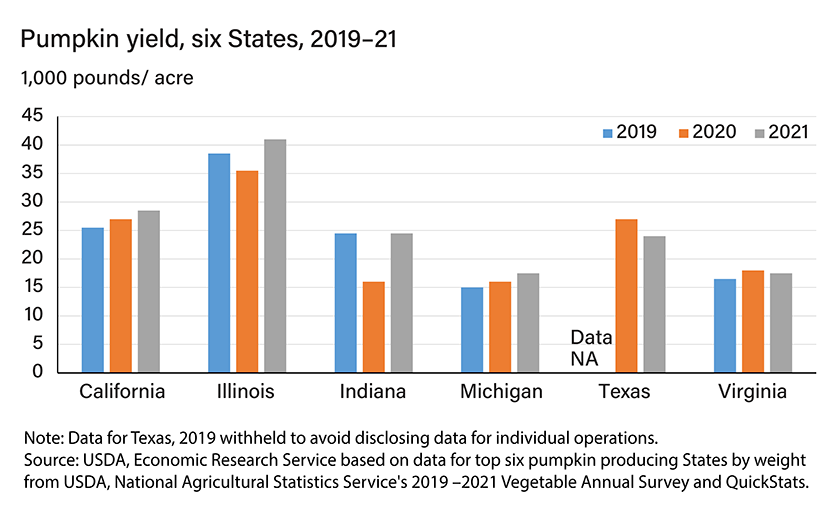7 Pumpkin Facts to Impress Your Friends on Halloween

In honor of Halloween, arm yourself with a few impressive statistics, courtesy of USDA, about everyone’s favorite fall squash: the pumpkin.
1. All States produce some pumpkins, but six States produce most of them.
2. In 2021, Illinois maintained its leading position in pumpkin acreage, harvesting more than twice as many pumpkin acres as any of the other top States, at 15,900 acres.

3. Pumpkins are a type of squash, indigenous to North America, and have been cultivated since at least 7,500 BCE. Today, pumpkins come in two types: pie type and decorative type. Pie pumpkins are generally smaller, denser, and sweeter than decorative pumpkins. Decorative pumpkins come in many varieties, although the orange Howden used for carving is the most common.
4. 80% of pumpkin acres in Illinois are devoted to varieties destined for pie filling or other processing uses.

5. Yields vary greatly among states and years. On average, Illinois grows about 40,000 lb. per acre (predominantly pie varieties), California grows about 30,000 lb. per acre. Indiana and Texas each grow around 25,000 lb. per acre.
6. Growers mainly produce jack-o'-lantern type pumpkins (Howden), but demand for specialty pumpkins—like White Howden, Cinderella, and Fairytale—continues to expand as consumers look for new and interesting varieties.
7. On average each American used 6 and a half pounds of pumpkin each year between 2016 and 2018.
And, of course, you can’t talk pumpkins without touching on the pumpkin spice obsession. Enjoy this AgDay clip from 2017 featuring host Clinton Griffiths:
Source: USDA







